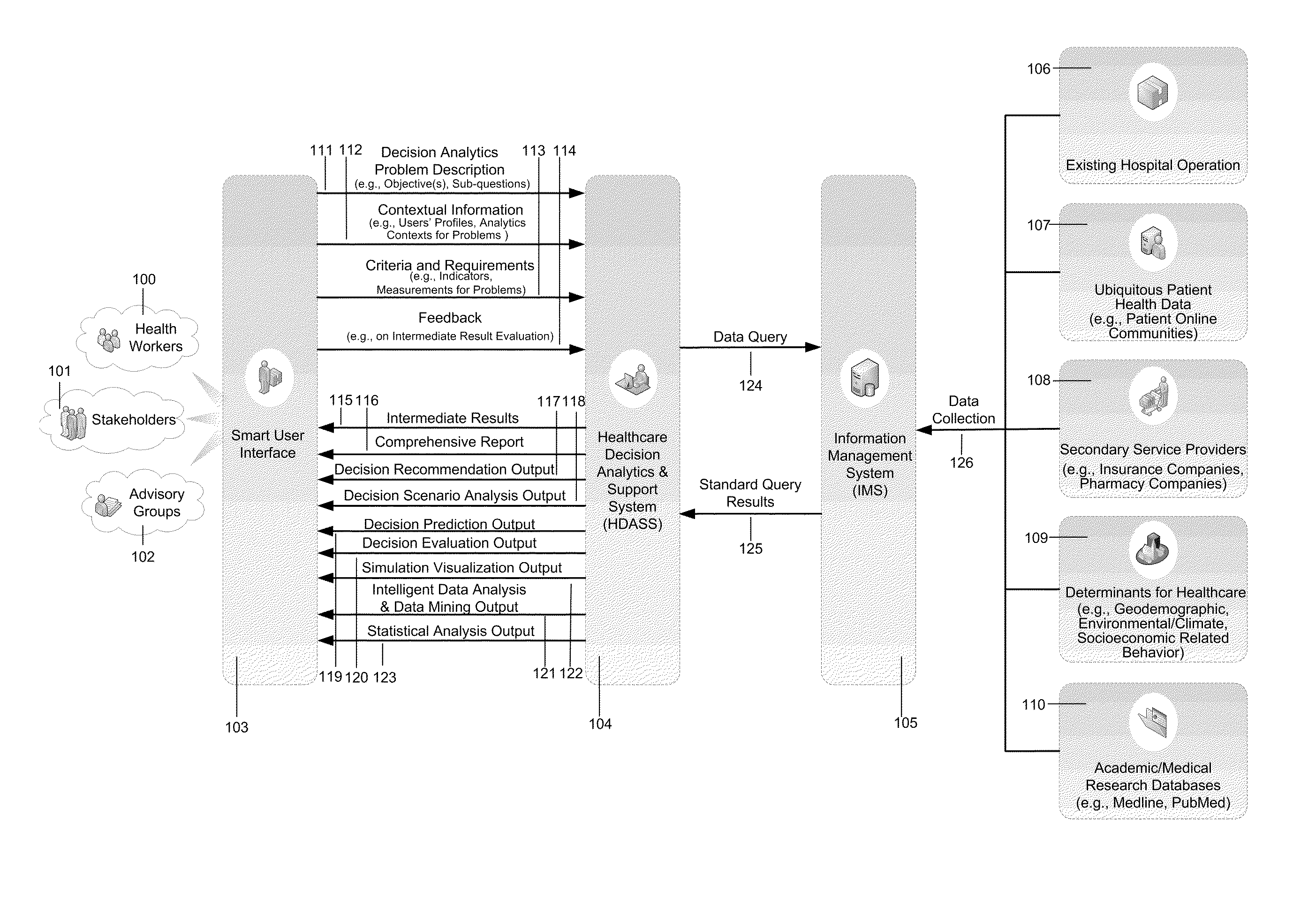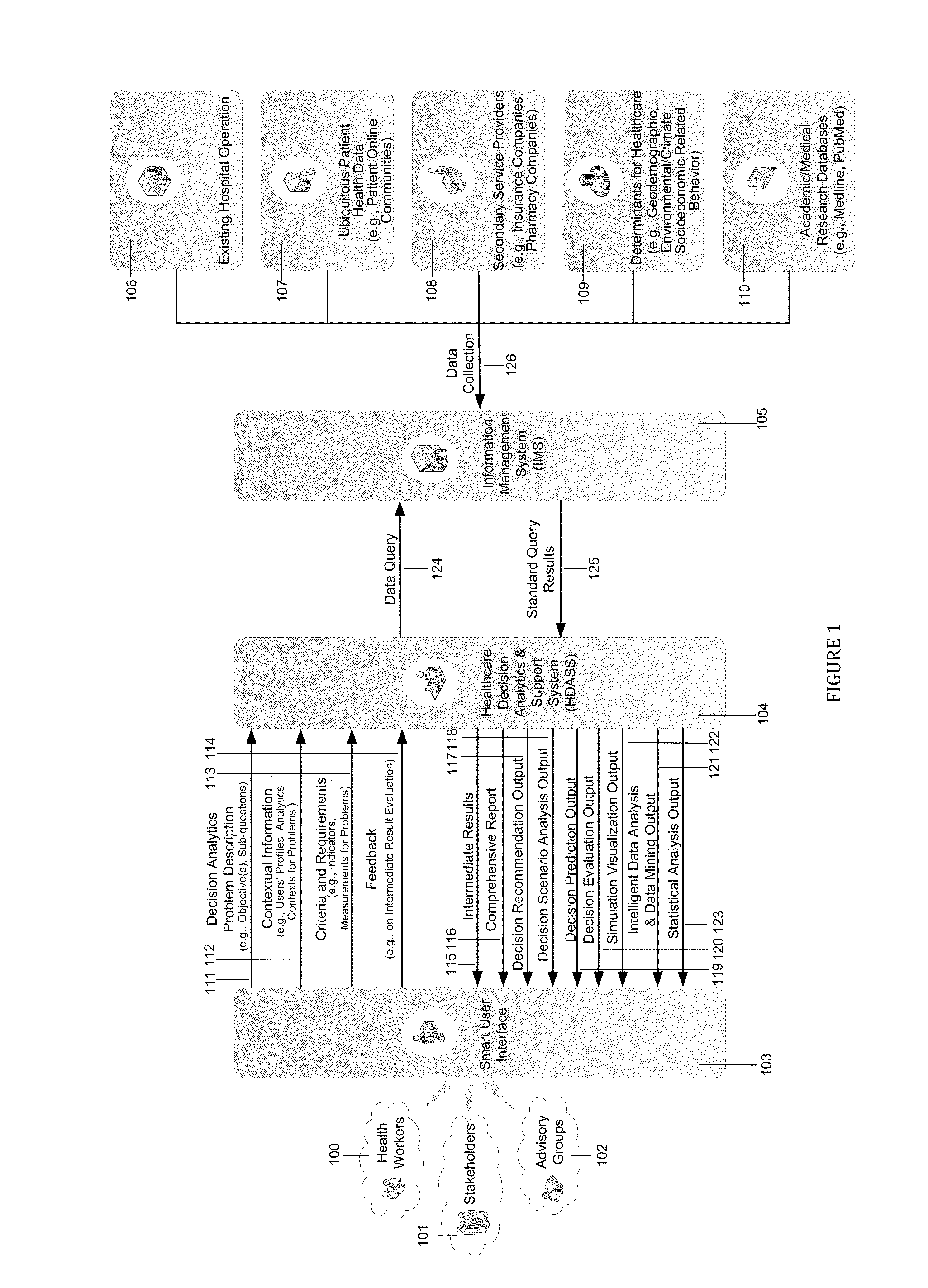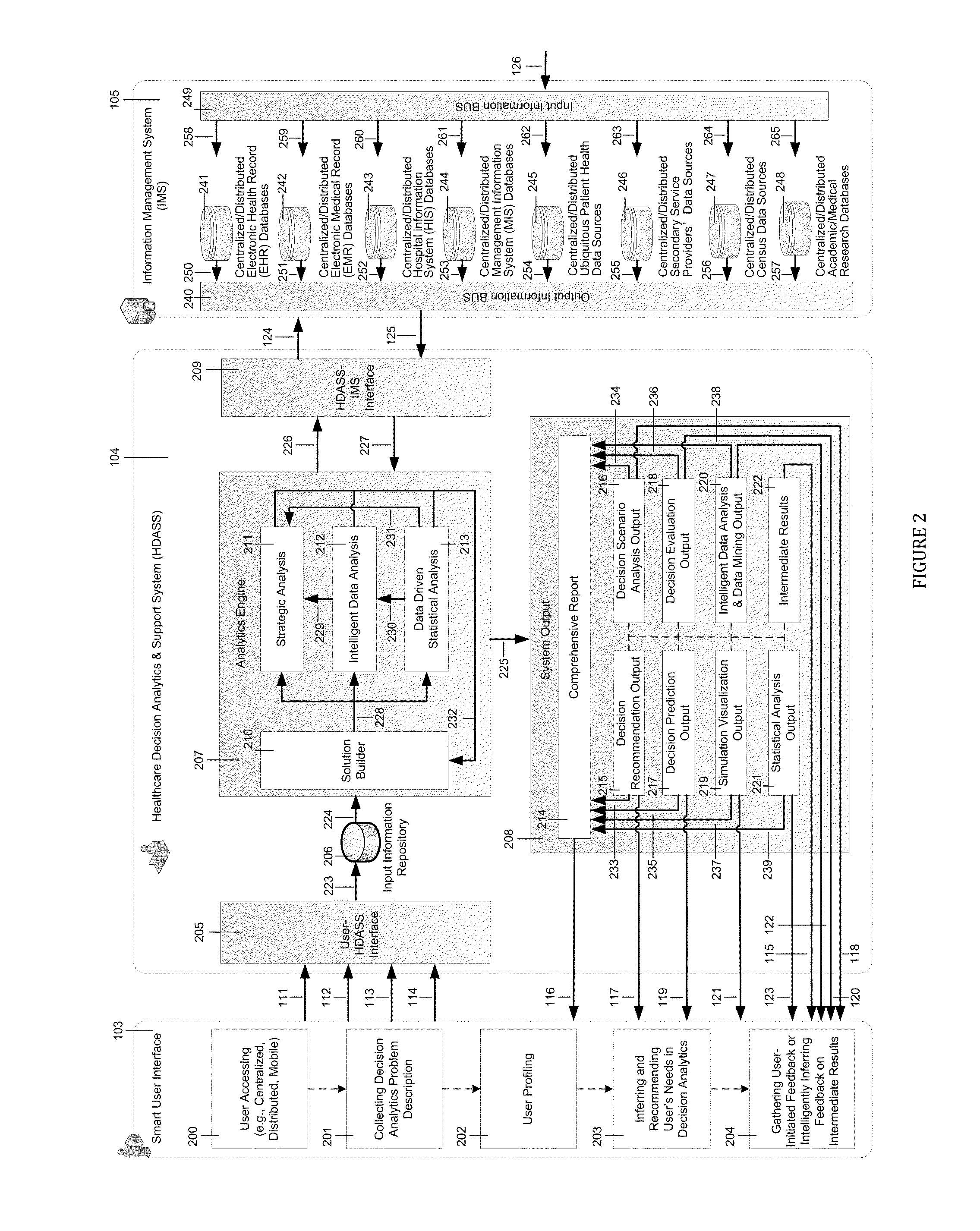Methods and Apparatus for Smart Healthcare Decision Analytics and Support
a technology for healthcare decision and analytics, applied in the field of methods and apparatus for smart healthcare decision analytics and support, can solve the problems of lack of a system in the art that comprises an integration of techniques and various data sources to provide comprehensive intelligent decision analytics and support functions
- Summary
- Abstract
- Description
- Claims
- Application Information
AI Technical Summary
Benefits of technology
Problems solved by technology
Method used
Image
Examples
embodiment illustration one
Methods and Apparatus for Adaptive OR Time Block Allocation Analytics and Decision Support
[0062]Operating room (OR) is one of the major cost areas in medical services providing institutions such as hospitals. Therefore, improving OR performance is particularly important for lowering the cost and providing need-based services in a timely manner, and therefore attracts big attention from hospital administrators.
[0063]Imagine that you are a hospital administrator at Hamilton Health Science Centre in Ontario. You would like to make a reasonable and evidence-based decision on how to improve the hospital's OR time block allocation method to cope with dynamically-changing / non-deterministic patient arrivals. You seek the help from the present invention, and sketch / describe your decision analytics and support problem like this:
[0064]“How to adaptively allocate operating rooms time blocks to maintain a stable OR performance in the face of dynamically-changing / non-deterministic patient arrival...
embodiment illustration two
Methods and Apparatus for Adaptive Regional Healthcare Resource Allocation Analytics and Decision Support
[0089]Healthcare resource allocation is one of the most important problems for regional healthcare administrators. Prior research such as McIntosh T, Ducie M, Charles M B, Church J, Lavis J, Pomey M P, Smith N, Tomblin S: Population health and health system reform: needs-based funding for health services in five provinces. CPSR 2010, 4:42-6 has advocated to allocate resources according to the occurrence and harmfulness of diseases in the population, for instance, as assessed by the population-needs-based funding formula based on neighborhood geodemographic factors (e.g., population size, age profile, geographic accessibility to services, and educational profile). However, by examining traditional estimation methods for service needs such as introduced in prior research Kephart G Asada Y. Need-based resource allocation: different need indicator, different result? BMC Health Servic...
embodiment illustration
[0106]As the determined solution, this embodiment illustration first automatically (1) builds hypotheses based on previous studies stored / maintained in Centralized / Distributed / Pervasive Academic / Medical Research Databases 257, in which data is gathered from Academic / Medical Research Databases 110 (e.g., Medline, PubMed), and (2) utilizes the structural equation modeling (SEM) method to capture the relationships between geodemographic factors and patient arrivals for cardiac surgery services based on the data queried from Centralized / Distributed / Pervasive Hospital Information System (HIS) Databases 243, Centralized / Distributed / Pervasive Management Information System (MIS) Databases 244, and Centralized / Distributed / Pervasive Secondary Service Providers' Data Sources.
[0107]An embodiment of Structural Equation Modeling 400 comprising all the hypotheses that are logically inferred and derived, as illustrated in the drawing of FIG. 15. For instance, previous studies such as Alguwaihes A, ...
PUM
 Login to View More
Login to View More Abstract
Description
Claims
Application Information
 Login to View More
Login to View More - R&D
- Intellectual Property
- Life Sciences
- Materials
- Tech Scout
- Unparalleled Data Quality
- Higher Quality Content
- 60% Fewer Hallucinations
Browse by: Latest US Patents, China's latest patents, Technical Efficacy Thesaurus, Application Domain, Technology Topic, Popular Technical Reports.
© 2025 PatSnap. All rights reserved.Legal|Privacy policy|Modern Slavery Act Transparency Statement|Sitemap|About US| Contact US: help@patsnap.com



